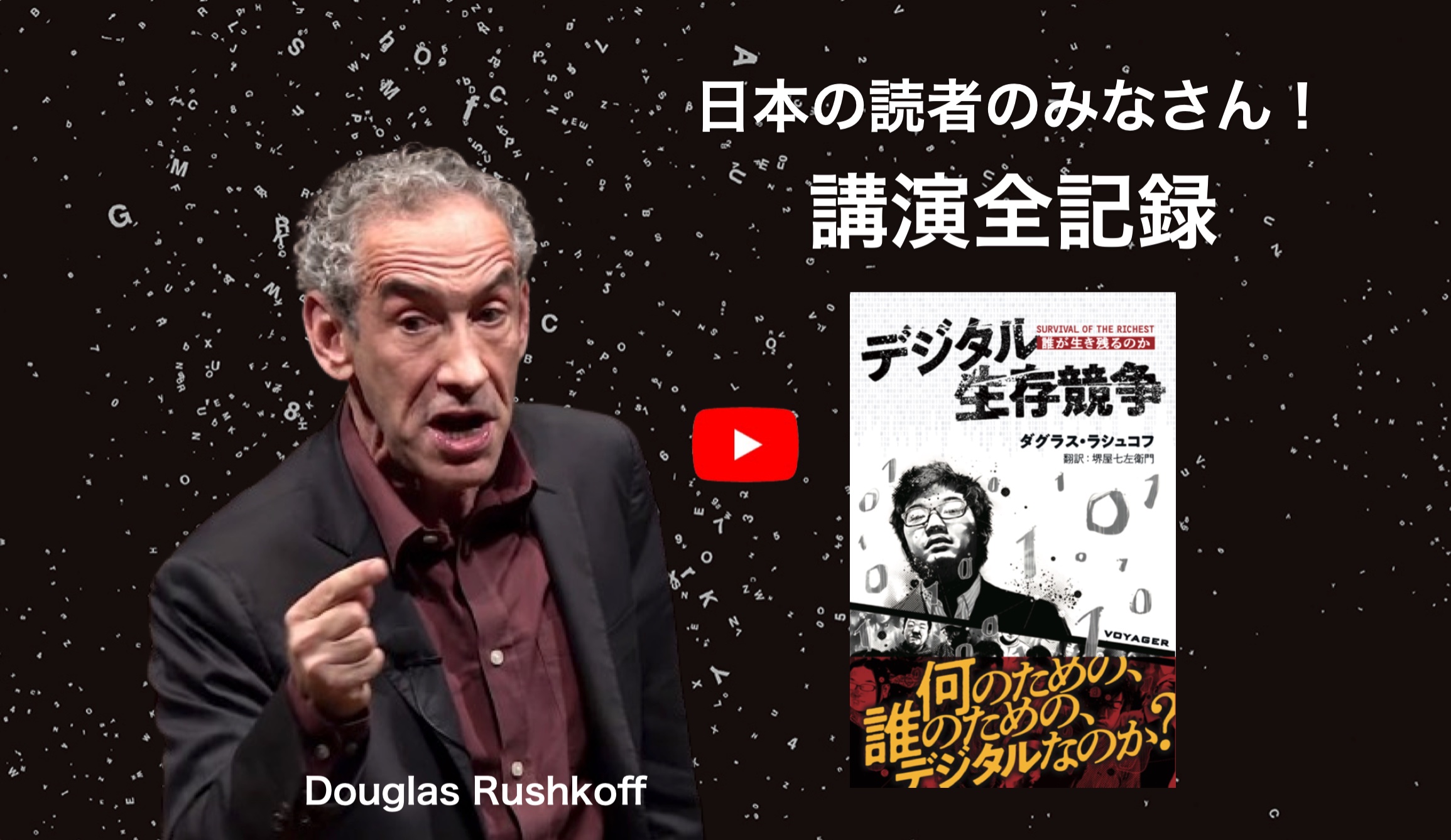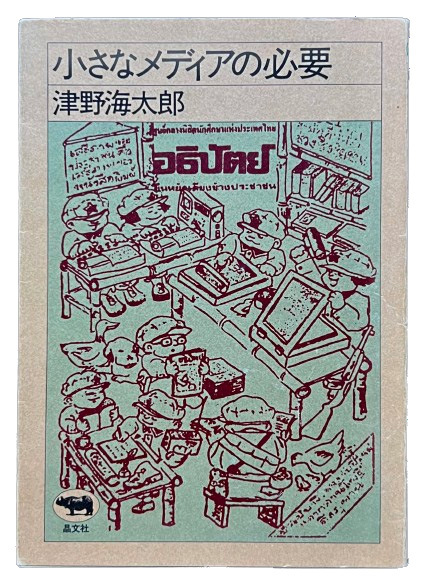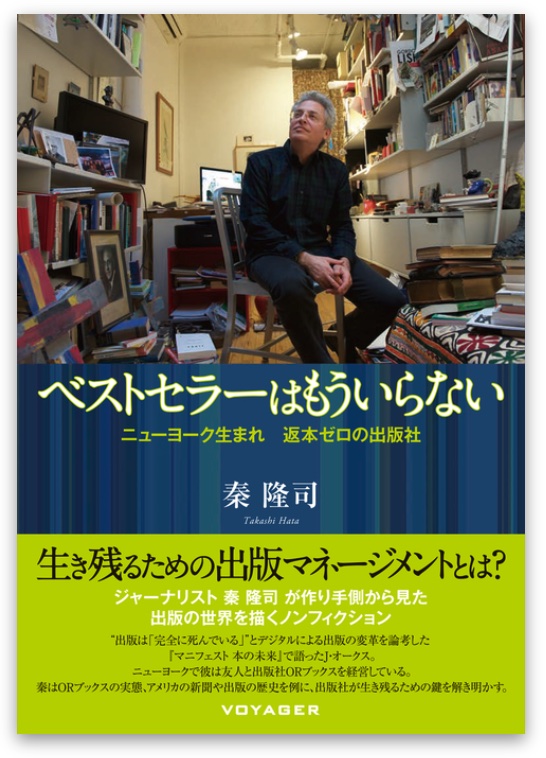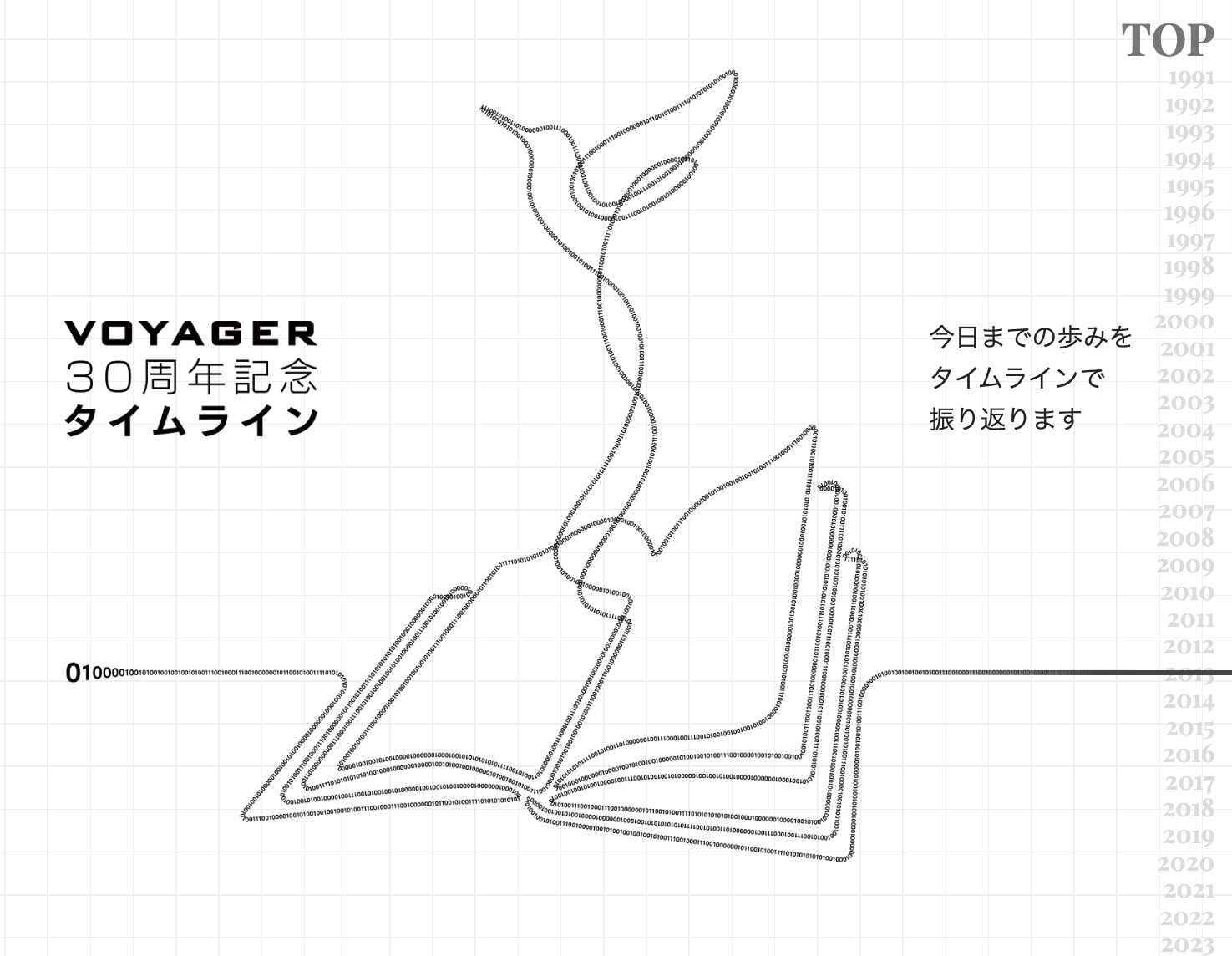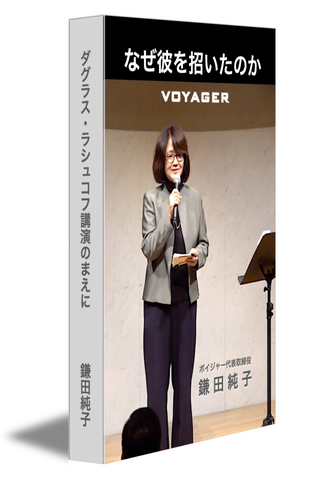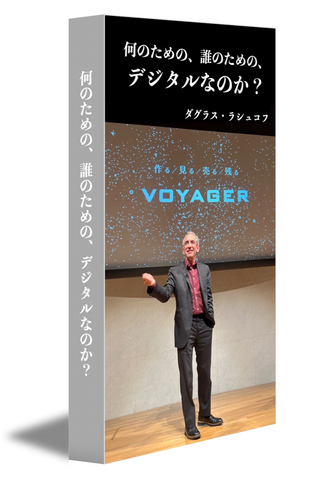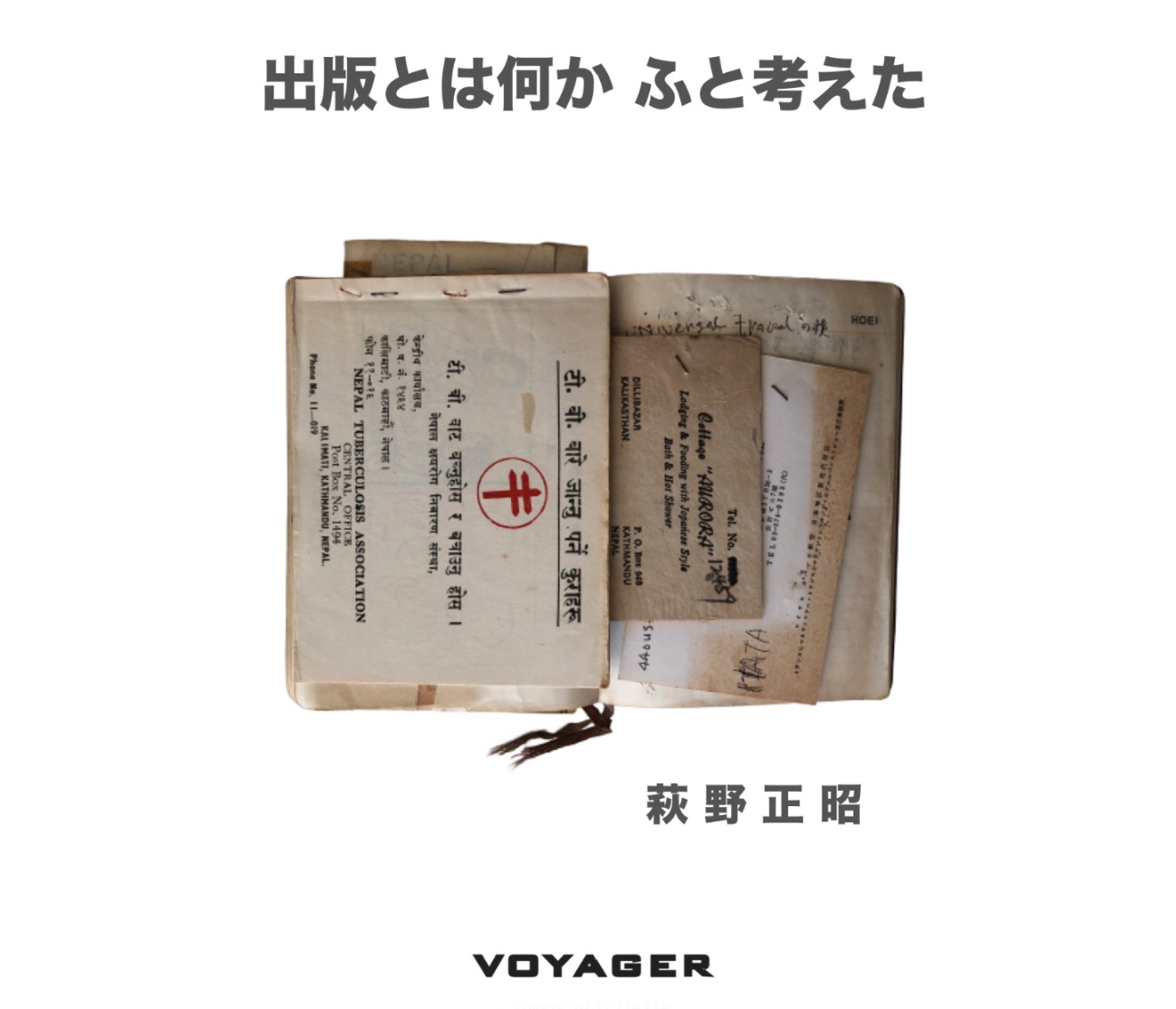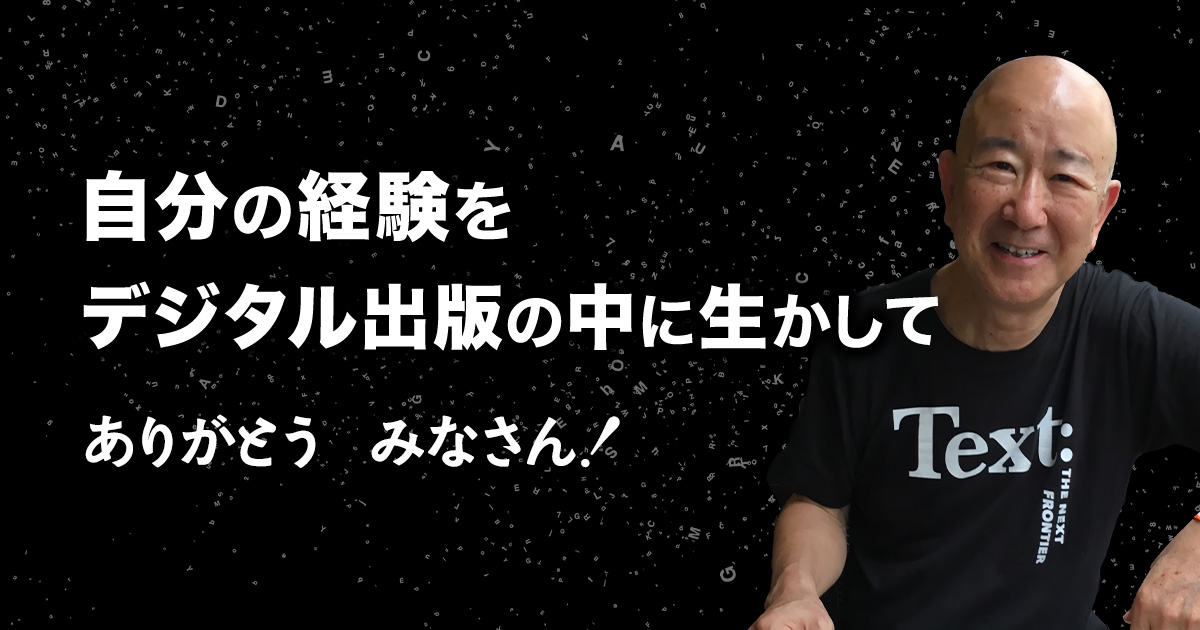
2024年1月26日にダグラス・ラシュコフ初来日での講演記録映像を映像章立て付きで全編1時間30分を公開しました。この制作背景を『デジタル生存競争』の編集を担当した萩野正昭(ボイジャー創業者)が自分自身の経験とあわせてレポートします。ご覧ください。
(Click here for English version)
(點擊此處查看中文版)
2023年12月6日、米国から来日したダグラス・ラシュコフ。その講演記録映像を公開いたしました。冒頭のボイジャー代表取締役の挨拶からエンディングまで、全編1時間30分あります。映像は章立てして当該内容にリンクします。また、講演映像からテキストを取り〝本〟が出来上がっています。映像と合わせてご利用になってください。映像と本が融合するデジタル出版の世界を体験できると思います。
彼の新作『デジタル生存競争』の出版もおこなっていたので、その主張がどんなものかは誰よりも予想できていました。実際は……それ以上でした。
私は1970年から1981年までの11年間、主に東映教育映画部の演出職として働きました。フィルム全盛の時代です。そして1981年から1992年までの11年間、レーザーディスクというニューメディア時代の黎明期をパイオニアLDCという会社で働きました。ことごとく映像主体の仕事に関わったわけです。フィルムとディスク、二つのメディアの間にあった大きな違いは、観る者がその映像を止められるか、1コマ2コマ戻せるか、大袈裟にいえば観る者が映像の走りをコントロールできるかできないかでした。フィルムはできず、レーザーディスクはできました。当たり前のような他愛なく聞こえることですが、私のその後の人生に深く、強く、影響を与えていきました。
私は映画の表現に不満をもっていました。関わっていたのは主に16mmフィルムでしたから、一秒間に24コマ、0.6フィート/秒の速さで走っていきます。一定にです。ストップモーションなんて、動きはストップしているのに、その静止した同じコマがズーっと走っているのです。生れた子の成長にともなう離乳食、どんなものを食べるか食材のお膳を撮影したことがあります。5秒でいいのか、6秒なのか、それとももっとか……よく考えてみれば、一コマの写真で十分だったわけです。一秒間に24コマで走らなければならない中ですべてを当てはめていく、それが馬鹿げて見えてきました。もっと融通を利かして伝える方法があるはずだ。なんでそれがないんだ。
1992年、〝電子書籍〟とか〝ebook〟とかいわれた次世代の出版の仕事に私は入っていきました。アメリカの親しい友人がレーザーディスクとMacintoshを繋げて面白いことをやっていました。それを見てたまらない衝動を覚えたのです。映像と本を繋ぎ、両者のいいとこ取りをするようなものです。見るように読む、読むように見る、と私は言いました。妙な世界を覗く気持ちでした。ここにはまだ明らかになっていない何かがある。が、しかしです、両者は別個のマシンです。独立したマシンです。それを繋ぐようにはできていません。大きな二つの機械とモニターとそれぞれを繋ぐケーブルが複雑に配線される必要がありました。なんだか難しいことを手慣れた特技のように誇らしくやりこなすことに己がいい気になっていたんでしょう。この時代は長くは続きませんでした。
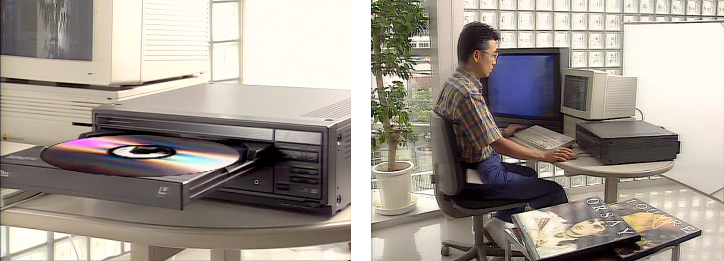
すべての情報因子はデジタルとなり、コンピュータがそれを操作する道具となりました。人は机というより、パソコンの画面に向かうようになりました。直径30cmもあった輝くレーザーディスクの円盤はどこかへ飛び去り、直径12cmしかないDVDもBlu-rayも消えかかっています。複雑な配線などを誇りようもありません。すべてはちっちゃなちっちゃなメモリーに集約され、コンピュータに吸い込まれていきました。
でも、映像と本が調和して画面に現れるようにはなりません。映画をタブレットで見ているのか、本をKindleで読んでいるのか、その違いはあっても映像は映像、本は本であります。調和する、融合するテクノロジーを奨励されることはなかったのです──何故か?
知的財産の転用が課題だったからです。知的財産を誰が保持していたのか? 既存の秩序を支配する……既存のメディアを牛耳るといっていい人たち、及びそれを取り囲む連中でした。彼らは既存のメディアを新しいメディアに乗せる画策をしたのです、手っ取り早く。それが購入者=ユーザーにとって一番わかりやすい飲み込みやすい手順だったのです。
映像の仕事をしているといえばカッコいい、わかりやすい。ただ、私はその環境下で彼らのための下働をしていたのです。結局は彼らの利益のために奮闘努力の毎日を過ごしていたのだと思います。〝キミたち芸術家は〟とか〝文部大臣賞〟とか、煽られ絆され、労働法の適用さえない環境下、劣悪低廉な条件でさえ受け入れていったのです。24コマ走る一定スピードに乗ることを前提に。そしてまた、そのスピードをコントロールできることの意味さえ分からずに、教えられることもなく。
〝小さなメディアの必要〟という津野海太郎の書いた本があります。心に刺さったのは〝小さなメディア〟の言葉です。読めば読むほど、これはテクノロジーを利用して生み出されるべき新しい世界なのかも……そうか、と思いました。だから、私たちは人の出版のための「鋤」や「鍬」を考えたのです。村の鍛冶屋のように。大切なことは自分がつくった道具で、自分がやってみることでした。道具を使って、いいのか、ダメなのか、それを自らが体験して知ることの大切さです。
(1981年 晶文社刊 電子本あり・無料)
映像関連の仕事で感じた不満、レーザーディスク、電子書籍で翻弄されるばかりの日々。つくったモノがあっけなく消え去り残ることはない。進化と称して変身・変貌するコンピュータ。訳もわからず侵入してくる新製品の数々でした。それを嫌って鋤や鍬を振るい、自分の手を頼って〝小さなメディア〟の耕作を願いました。テキストへの執着はそのあらわれです。
しかし、どうしても捨て去れない〝映画屋魂〟がついて回りました。身に染み込んだものでした。捨て去るのではなく、二つが調和する、協力し合うってできないのか、多少はお互い認め合う関係ってあるんじゃないのか…… 願ってはみてもなかなかできない。著作権という財産権も入ってきて勝手なことは許されない。全部何から何まで自分でやらなきゃならんのかい。そんなことすぐにやれることじゃない。稲作だって一年かかってはじめて刈取りの日を迎える。作付けから収穫までの全工程を自力でやっていく、そういうことかい。みんなはどうやって生きているのか? 小さな出版社がやることってどんなことなんだろう? ニューヨークにあるOR Booksという出版社の活動に注目しました。良く知らない変なこと、妙なことをやっていたからです。彼らを取材して本まで出しました。
OR Booksのジョン・オークスは私に『Program or be Programmed』を教えてくれました。直訳すれば「プログラムするのか、プログラムされるのか」でしょう。私たちは知らないうちに自分でやることから誰かにやってもらう世界に身を置き、気づかないうちに対価を支払っている。簡単に、楽に、どんどん進めば進むほど対価という直接的な金銭だけではなく、抽出・監視・制御につながる情報を相手に与え続けることになる。相手はその情報を利益に結びつける動きに走っていく。
『Program or be Programmed』の著者はダグラス・ラシュコフでした。私たちはこの本を『ネット社会を生きる10カ条』として日本語出版しました。ここで強調されることは、ネットを正視しろということです。気を付けろ、こんなことまでやっている。自分が使う道具として、ネットを考え直そう、と。
自分がやるのはいい……でも、何から何まではできない、正直にいって。荷が重すぎる。けれど時間をかけて、くだらないと思うようなことでも粛々と積み重ねていく、イヤがらずに……記録することだけなら何とかいけるだろう。消されて当然の瑣末な出来事、でも自分にとっては貴重な思い出、これを残す重みに目を向けよ!
どんなに苦しくても人は書く言葉を手にしている。書き綴る最低限の手段をもっている。さらにこの時代、貧弱であっても映像を使う可能性は私たちの手元にもたらされた。スマホで結構な映像を記録できる。偉そうなことじゃなく、日常の細々した普通の世界のことなら、自分でテキストと映像を融和させる余地が生まれるはずだ、きっと。やるだけだ、黙って。何を言われようと、揶揄されようと、口を結んで進むだけだ。その先に手に手をとってお互をハグするような連帯の世界がきっとやってくる。そしてやり続けたのです──30余年を!
ダグラス・ラシュコフに影響を受けて、私たちはさらに彼の2冊の著作を日本語化しました。『チームヒューマン』と『デジタル生存競争』です。『デジタル生存競争』には──誰が生き残るのか──というサブタイトルも付けました。そして、彼の言葉を直接聞こうと、日本へ招いたのです。
青山にある東京ウィメンズプラザという会場に集まった約150名の聴衆に彼は語りました。激しく、強く、です。現実のリアルな姿を体験したのはここにいた150人に限られています。こんなすごいことを聴けるんなら、もっと多くの人に呼びかけておくべきだった。でも、知ったのは後になってからなのです。あの辛口なスピーチ、そして我々の危機的状況、インターネットは変わり、抽出、監視、制御が役割の中心になり、これが搾取という一連の設定を備えていたのです。
〝昔取った杵柄〟が発揮されました。ダグラス・ラシュコフの講演のすべてを3台+αのビデオカメラで収録し、これを本格映像編集したのです。ボイジャー代表取締役の鎌田純子は、講演の冒頭に私たちの歴史と取り組み、そしてダグラス・ラシュコフとの出会いを語っています。映画の仲間の力も動員して一生懸命つくりました。どうぞその有り様は映像でご覧になってください。
痛快だったのは、〝本〟も一緒にできていったことです。映像への字幕挿入作業で準備したテキスト・データが瞬時にデジタル出版ツールに取り込めたことです。字幕から、わずかなタイムラグを置いて〝本〟がつくられました。映像からいいカットを抜き、あるいは関連情報の画像を探して入れています。映像記録と〝本〟が同時に並行して出来上がっていくのです。映像はストップさせ、戻して理解できます。その上に〝本〟があれば、じっくり読み解くこともできます。理解は大幅に広がっていきます。それを僅かな力でなし遂げられる……あゝ、これがデジタル出版というものなのか、散々やってきた私たち自身が実感したのです。
特別なものじゃない、テーマは自分本位、講演の中継のような当たり前のものです。何を誇ればいいのか、尻込みしておかしくないです。確かにそうではあってもです、すべて自分たちで積み重ねてきたものなんです。違いはそこでしょう。全部自分でやったのです。講演する著者を見つけ出してきたことから、契約、翻訳、書籍販売、電子本公開、招待、講演の段取りから収録、編集まで。これらの動きのことごとくが自分たちの手を通して行われた……。映像とテキストが融和する新しい出版をちょっと感じさせるのです。きっかけをつくっているといっていいでしょう。
今回の仕事は、私のボイジャーという会社での現役最後のものとなりました。映画11年、LaserDisc11年、そしてデジタル出版31年の経験から出来上がったものです。決して派手なものじゃない。威張れるものじゃない。でも、すべてにおいて吟味された品質がここにはあるような気がします。それは、あゝでもないこうでもない、あっちだこっちだ、そうだ、違う……延々と50余年繰り返された葛藤の中から導き出された結論に繋がっています。名もなく貧しく振り返られることもなかったあの教育映画で、それでも教室の子ども達へ現実を撮える仕事に果敢に向き合った品位と一緒ではなかったかと。これを今、自分の誇りだと思います。今回、一緒に仕事を協力しあった映画時代のスタッフと、そしてデジタル出版のスタッフと抱き合い肩を叩き合いたい気持ちでいっぱいです。
最後に付記させてください。ダグラス・ラシュコフは、この講演の中で次のようなことを言いました。
──私がここへ来てボイジャーの歴史を聞くと、それは知的財産からどのようにしてお金を稼いだのかの歴史ではありません。誰でも本をつくり、出版配布できるように、出版の競争条件を平準化するために、より優れたテクノロジーを使用するよう人々を説得してきた話なのです。
そしてこう言ったのです──〝それは革命です〟と。
そうか……革命だったのかぁ。知らなかった。長々と書きました。そして、これから何度もイイ気になって同じこと言うかもしれない。その節は、ごめんなさい! お先に謝っておきます。
Utilize your own experience in digital publishing
On December 6, 2023, we have released a video recording of a lecture by Douglas Rushkoff, who came to Japan from the United States. The entire episode runs 1 hour and 30 minutes, from the Voyager CEO’s greeting at the beginning to the ending. Videos will be organized into chapters and linked to the relevant content. In addition, a “book” has been created by taking the text from the lecture video. Please use this together with the video. I think you can experience the world of digital publishing where videos and books are fused.
I made a video recording of the lecture in earnest. I knew he was a pretty harsh media commentator. He had also published his new book, “Survival of the Richest,” so I should have been able to predict better than anyone what his argument would be. Actually… it was more than that. I’m glad I took a picture of it. It was recorded with three video cameras and then fully edited. It’s just a “skill got in one’s former days.”
For 11 years from 1970 to 1981, I worked primarily as a director at the Toei Educational Film Department. This was the era of film’s heyday. Then, for 11 years from 1981 to 1992, I worked at a company called Pioneer LDC at the dawn of the new media era of LaserDiscs. All of my work involved video-based work. The major difference between the two media, film and disc, was whether the viewer could stop the image, or go back one or two frames, or to put it bluntly, whether the viewer could control the movement of the image or not. The film was not possible, but LaserDiscs was. It may sound trivial, but it had a deep and strong influence on my life.
I was dissatisfied with the film’s presentation. The film involved was primarily 16mm film, so 24 frames per second were running at a constant speed of 0.6 feet per second. In stop motion, the motion is stopped, but the same still frames are still running. I have shot the filming of baby food and what kind of food to eat as the baby grows. Should it be 5 seconds, 6 seconds, or more? If you think about it, one frame of the photo was enough. It started to look ridiculous trying to apply everything while having to run at 24 frames per second. There must be a more flexible way to communicate with each other. Why don’t you have that?
In 1992, I started working in the next generation of publishing called “ebooks.” A close friend of mine in America was doing something interesting by connecting a LaserDisc to a Macintosh. When I saw that, I felt an irresistible urge. It’s like connecting videos and books and taking the best of both. I said, read as you see, see as you read. It felt like I was looking into a strange world. There is something here that is not yet clear. However, they are separate machines. It’s an independent machine. It’s not designed to connect that. The cables connecting the two large machines and monitor needed to be wired in a complicated manner. I guess I felt good about myself for being able to do difficult things with pride, as if I had mastered them. This era did not last long.

All information factors have become digital, and computers have become the tools to manipulate them. People are now facing computer screens rather than desks. Shining LaserDiscs that were 30 cm in diameter have flown away, and DVDs and Blu-rays that are only 12 cm in diameter are disappearing. There’s no point in boasting about complicated wiring. Everything was consolidated into a tiny little memory and sucked into the computer.
However, the videos and books do not appear on the screen in harmony. Whether you’re watching a movie on a tablet or reading a book on a Kindle, a video is still a video and a book is a book. Harmonizing and merging technologies were never encouraged──why?
This is because the diversion of intellectual property rights was an issue. Who held the intellectual property rights? These were people who could be said to control the existing media that controlled the existing order, and those who surrounded them. They planned to repurpose existing media into new media, quickly. This was the easiest procedure for buyers/users to understand.
When I say that I work in movies, it looks cool and easy to understand for many people. However, in that environment, I was working as a servant for those who controlled intellectual property rights. In the end, I think I was spending my days struggling and working hard for their benefit. I was just encouraged and bonded with things like “you are the artists” and “award for excellence.” I accepted even poor and cheap conditions in an environment where labor laws did not even apply. The premise is to ride at a constant speed for 24 frames. And again, I didn’t even know what it meant to be able to control that speed, and I wasn’t taught anything about it.
There is a book written by Kaitaro Tsuno called “The Need for Small Media.” What stuck with me was the phrase “small media.” The more I read, the more I thought that this might be a new world that should be created using technology. That’s why we thought of a “plow” or “hoe” for people’s publishing. Like the village blacksmith. The important thing was to try it myself using the tools I had created. It is important for me to experience and know for myself whether it is okay or not to use a tool.
Media is not just media that requires computers or advanced technology. Making newspapers using simple printing methods, books using comics with handwritten letters and performing plays, music without a theater
…… opens up the possibilities of small technology.
My dissatisfaction with film production, my days of being at the mercy of laser discs and e-books. The things we create disappear so quickly that nothing remains. Computers are rapidly changing in the name of evolution. There were a lot of new products that came in without any understanding. Disliking this, I grabbed a “plow” and a “hoe” as publishing tools and appealed to everyone to cultivate “small media.” We were obsessed with text because we disliked complexity and wanted to approach digital publishing with simplicity.
However, rather than throwing away the ingrained cinematic ideas that I acquired during my film days, which I cannot get rid of, I try to harmonize the cinematic ideas and the book method. Isn’t it possible to cooperate with each other, or maybe there is a relationship where there is some mutual acceptance…Even if I wish, it is not possible. There is also a property right called copyright, and anything that infringes on copyright is not allowed. Do I have to do everything myself? That’s not an easy thing to do. Even rice cultivation takes a year to reach its first harvest. Do you mean that you handle the entire process from planting to harvest on your own? How is everyone doing? What kind of things does a small publisher do? I focused on the activities of a publishing company called OR Books in New York. They were doing something special, something new. We interviewed them and even published a book.
In order to realistically overcome the negative legacy that publishing has fallen into, their style of abandoning old practices and utilizing new digital technology will be revealed.
John Oakes of OR Books introduced me to “Program or be Programmed.” Without realizing it, we have moved from doing things ourselves to having others do it for us, and without realizing it, we are paying the price. The easier it is to advance, the more you will continue to give the other party not only direct money in the form of compensation, but also information that can be extracted, monitored, and controlled. Those who program us will begin to use that information for profit.
The author of “Program or be Programmed” was Douglas Rushkoff. We published this book in Japanese. The emphasis here is to look squarely at the internet. Be careful, you’re doing this. Let’s reconsider the internet as a tool that you use.
It’s fine if I do it myself…but to be honest, I can’t do everything from beginning to end. The load is too heavy. However, if I just take my time and steadily accumulate things, even if I think they are trivial, and record them without feeling bad about it, I think I can manage. It’s a trivial event that deserves to be erased, but for me it’s a precious memory, so pay attention to the weight of preserving it!
No matter how painful it is, people still have the words to write. We have the bare minimum means of writing. Moreover, in this era, the possibility of using images and videos, however meager, was at our fingertips. You can record a lot of footage with your smartphone. I’m sure there will be room for us to integrate text and images on our own, if we’re talking about the small, ordinary world of everyday life, rather than something grandiose. Just do it, shut up. No matter what is said or ridiculed, just keep your mouth shut and move on. In the future, a world of solidarity, where we can hold hands and hug each other, will surely come.
And I kept doing it for over 30 years!
Inspired by Douglas Rushkoff, we also translated two of his books into Japanese. “Team Human” and “Survival of the Richest .” I invited him to Japan to hear his words directly.
He spoke to an audience of about 150 people gathered at a venue called Tokyo Women’s Plaza in Aoyama. It’s intense and strong. Only 150 people here were able to experience a real live speech. If I was going to hear such amazing things, I should have called out to more people. But I didn’t find out until later. That vitriolic speech, and our crisis situation, the internet has changed and extraction, surveillance and control have become central to its role, and this has come with a set of settings for exploitation.
“Skill got in one’s former days’’ was put to use. We video recorded and edited all of Douglas Rushkoff’s lectures. Junko Kamata, Voyager CEO, begins her talk by talking about our history and efforts, as well as her encounter with Douglas Rushkoff. I worked hard to make it, mobilizing the help of my film colleagues. Please take a look at the video to see it in action.
What was exciting was that the “book” was also created together. The text data prepared for inserting subtitles into the video could be instantly imported into the digital publishing tool. After a slight time lag, the “book” was created from the subtitles. I extract good cuts from videos, or search for images with related information and include them. The video record and the “book” are created simultaneously and in parallel. You can stop the video and go back to understand it. If you have a “book” on top of it, you can read it carefully. Your understanding will expand significantly. Being able to accomplish this with just a little effort…Ah, this is what digital publishing is all about, and we have come to realize it ourselves after having done so many times.
It’s nothing special, the theme is self-centered, and it’s something commonplace like broadcasting a lecture. It’s no wonder I’m hesitant about what I should be proud of. That’s true, but it’s all something we’ve built up ourselves. That’s probably the difference. I did it all myself. From finding authors to give lectures, to contracts, translations, book sales, publishing e-books, invitations, organizing lectures, recording, and editing. All of these movements were carried out through our own hands… It gives me a bit of a feeling of a new type of publishing that blends images and text. I could say that it is creating an opportunity.
This job was my last at Voyager. It is the result of 11 years of experience in film, 11 years in LaserDisc, and 31 years in digital publishing. It’s not anything flashy. It’s not something to be proud of. However, I feel that the quality of everything here has been carefully examined. It’s neither that nor that, it’s this, it’s that, it’s that, it’s different…it is connected to the conclusion that was drawn from over 50 years of repeated conflicts. Even though he was an anonymous, poor, and never looked back on educational film, I think I had the same dignity as the one who boldly faced the task of capturing reality for the children in the classroom. I feel proud of this now. This time, I am filled with the desire to hug and clap each other’s shoulders with the staff I worked with from the film era, as well as the digital publishing staff.
Please let me add this at the end. Douglas Rushkoff said the following in this lecture:
“When I come here and hear the history of Voyager, it’s not the history of how did we make money off our intellectual property. It’s the story of how did we convince people to use better technologies to level the playing field of publishing so that anybody can make and publish and distribute a book.”
“That’s revolution.”
I see…it was a revolution. I did not know. Sorry, I wrote it a little too long. And I might get excited and say the same thing over and over again. Sorry again about that part! I would like to apologize in advance.
過去的視訊經驗賦予了數位出版意義
Douglas Rushkoff 於 2023 年 12 月 6 日從美國抵達日本。 我們發布了講座的錄製影片。 整集從 Voyager 董事長的問候開始到結束,長達1小時30分鐘。 影片將被組織成章節並連結到相關內容。 此外,還根據講座影片中的字幕創建了一本「書」。 請與影片一起觀看。 我認為您可以體驗影片和書籍融合的數位出版世界。
我們認真地錄製了講座影片。 他是一位非常嚴厲的媒體評論家。 我還參與了他的新書 “Survival of the Richest” 的出版,所以我應該比任何人都更能預測他的論點是什麼。其實……這還不是全部,驚喜比我預想的還要多。 我有幸錄製了這段影片。 講座由三台攝影機錄製並經過全面編輯。
從 1970 年到 1981 年的11年間,我主要在東映教育電影部擔任導演。 這是電影的全盛時代。 然後,從 1981 年到 1992 年,我在雷射光碟新媒體時代初期在一家名為 Pioneer LDC 的公司工作了 11 年。 我所有的工作都涉及影片的工作。電影和雷射光碟這兩種媒體之間的主要區別在於觀看者是否可以停止影像或返回一幀或兩幀。 換句話說,問題是觀看者能否控制影片的時間軸。 電影不可能,但雷射光碟可以。 這聽起來可能微不足道,但它對我的人生產生了深刻而強烈的影響。
我對電影的呈現方式不滿意。 我製作的影片主要是 16公釐膠片,因此它的運行速度為每秒 24 幀,即每秒 0.6 英尺。 勻速不停地在轉動 。 即使在 Stop Motion 的停滯狀態下,相同影像的膠片仍在運行 。 我拍了嬰兒食品的影片以及隨著嬰兒的成長該吃什麼樣的食物, 影片應該是5秒、6秒還是更長呢?想想看,一幀照片就夠了,以每秒 24 幀的速度表達一切顯得荒謬, 一定有一種更靈活的方式來傳達這一點,為什麼沒有別的表現方式?
1992 年,我開始從事稱為「數位出版」和「E-BOOK」的新一代出版業。 我在美國的一位密友正在透過將雷射光碟連接到Macintosh電腦上做一些有趣的事情。 當我看到這個的時候,我有一種無法抗拒的衝動。 這就像將影片和書籍連接起來並充分利用兩者的優點。 我認為「讀如所視,視如所讀」,感覺就像我正在探索一個陌生的世界, 這裡有一些事情還不清楚,電腦和光碟播放器是兩種獨立的機器, 不是為了連接彼此而設計的,連接兩台大型機器和顯示器的電纜需要以複雜的方式佈線,我進行了困難的接線,就好像這是我已經掌握的技能一樣,這讓我感到很自豪。 然而這個時代並沒有持續太久。

所有資訊要素都已數位化,電腦已成為操縱它們的工具。 人們現在面對的是電腦螢幕而不是辦公桌。 直徑30公分的閃亮雷射光碟已經飛走,直徑只有12公分的DVD和藍光光碟正在消失。 吹噓複雜的接線是沒有意義的。 所有的一切都被整合到一個小小的儲存器中,並且被導入到電腦中。然而,電影和書籍在螢幕上的顯示並不和諧, 無論您是在平板電腦上觀看電影還是在 Kindle 上閱讀書籍,電影仍然是電影,書籍仍然是書籍。 協調、混合技術從未被支持過——為什麼?
我們面臨的挑戰是防止他人盜用智慧型財產。 誰擁有智慧型財產? 他們是控制現有秩序的人……可以說是控制現有媒體的人,以及他們周圍的人。 他們計劃迅速將現有媒體轉移到新媒體, 這是購買者/使用者理解並接受起來最簡便的方法。電影製作很酷,而且易於每個人理解。 但在那樣的環境下,我卻是給他們當僕人, 最終,我每天都在為他們的利益而努力。 有人告訴我「你是藝術家」和「教育部長」之類的話, 我被鼓勵在一個甚至不適用勞動法的環境中接受貧窮和廉價的條件,前提是勻速轉動24幀, 而且我根本不懂怎樣能夠控制速度, 沒有人教過我任何東西。
津野海太郎寫了一本書,名為『小媒體的需求』,讓我印象深刻的是「小媒體」這個詞, 我讀得越多,想的越多,也許這是一個應該用科技創造的新世界……或許如此。 因此我們考慮了用於出版的工具,就像村裡鐵匠做的「犁」和「鋤頭」一樣, 重要的是親自嘗試自己製作的工具, 親自體驗並了解這個工具的性能好壞。
我對影片相關工作的不滿,那些受雷射光碟和電子書支配的日子。 我們創造的東西輕易消失,何以談及保留。 一台以進化之名不斷改造的電腦,有很多新產品在沒有任何了解的情況下問世。 我們不甘心這樣,於是揮舞鋤頭,希望用自己的雙手培育出「小媒體」。 我們對文本的執著就是這一點的體現。然而,我有一種無法擺脫的「電影院精神」。 這是我根深蒂固的東西, 與其放棄它們,我更想知道這兩個媒體是否有可能和諧合作,或者可能存在一種相互接受的關係……即使我願意,也是不可能的。 由於涉及到版權和財產權等問題,我們不能為所欲為, 我必須自己做所有事情嗎? 這不是可以立即做的事情, 即使是水稻種植也需要一年的時間才能獲得第一次收穫,從種植到收穫的整個過程都是我要自己處理的嗎? 大家都是怎麼處理這個問題的呢? 小型出版社會做哪些事情呢? 我們主要關注了紐約一家名為 OR Books 的出版公司的活動。 因為我一直在做一些我並不真正了解的奇的事情, 我們採訪了他們,甚至出版了一本書。
OR Books 的 John Oakes 向我介紹了『Program or be Programmed』。不知不覺中,我們已經從自己做事轉變為讓別人為我們做事,在不知不覺中,我們正在付出代價。 進展越容易,你就越會繼續給予對方,不僅有直接的金錢補償形式,還有可以提取、監控和控制的資訊。 網路可以做到很多意想不到的事情。
『Program or be Programmed』一書的作者是 Douglas Rushkoff。 我們出版了這本書的日文版。 這裡強調的是要正視網路,小心點,對方會想盡辦法將該資訊轉化為利潤。我們應該重新考慮它作為我們可以使用的工具,而不是被網際網路使用。
自己做也可以……不過說實話,我不可能從頭到尾都做,負擔太重了。不過,如果你慢慢來,慢慢積累,即使你覺得這些東西微不足道,也不要難過……只要記錄下來,總有一天會派上用場。也許是非常不起眼而且很快被遺忘的小事,但對於創作者來說卻是一段珍貴的回憶,那就要重視怎樣去保存這段美好記憶。
不管多痛苦,人們還是有話可寫。 我們保留了最基本的書寫方式。 此外,在這個時代,使用影像的可能性,即使是很小的片段,也被帶到了我們的手中。 您可以使用智慧型手機錄製大量影片,這些拍攝內容不是大事件,而是日常生活中的小細節,我相信您會有空間自己整合文字和圖像, 不用管別人說什麼或嘲笑什麼,只顧繼續前進。 未來,我們一定會到達一個團結的世界,我們手牽手,彼此擁抱。 我們 Voyager 已經這樣堅持了 30 多年。
受到 Douglas Rushkoff 的啟發,我們也將他的兩本書翻譯成日文。 “Team Human” 和 “Survival of the Richest”。 我還加了副標題——誰能生存? 我想直接聽聽他的想法,便邀請他來了日本。
他在東京的一個演講廳向大約 150 人發表了演講, 這是一場激烈而有力的演講。 只有150人在這裡體驗到真實的表現。 如果我早知道演講內容這麼驚人,希望更多人來聽這次的講說。 他發表了嚴厲的講話並談到了我們的危急處境。 網路已經發生了變化,提取、監視和控製成為其角色的核心,並且有一套可供利用的設定。
我的電影經驗得到了很好的運用。 我們對 Douglas Rushkoff 的所有演講進行了視訊錄製和剪輯。 Voyager 代表董事・鎌田純子 在演講開始時講述了我們的歷史和經驗與收穫,以及她與 Douglas Rushkoff 的邂逅。 請觀看我在電影同事的幫助下努力完成的講演全過程的影片。
令人興奮的是,「書」也是一起創作的。 為將字幕插入影片而準備的文字資料可以立即匯入到數位出版工具中。 文字導入數位出版系統之後,不到幾分鐘「書」就製作完成了。 我從影片中提取好的畫面,或搜尋具有相關資訊的圖像並將其插入, 視訊記錄和「書」是同時並行完成的 , 人們可以把影片停下來再返回加深理解。 如果再有一本「書」可以供人們仔細閱讀的話那更是錦上添花了,只需一點點努力就可以做到這一點……啊,這就是數位出版的意義所在,我們也是嘗試了無數次之後才意識到了這一點。
沒什麼特別的,主題都是以自我為中心的,就像演講司儀一樣平常的事, 不知道可不可以以此為榮,或者可以感到尷尬都是很正常的。 確實如此,但這都是我們自己長時間積攢下來的東西, 這大概就是所謂的區別吧,從尋找作者,到簽約、翻譯、書籍銷售、電子書出版、邀請、講座安排、錄影等,整個過程都是獨自一人完成下來的 。 所有這些活動 都是透過我們自己的雙手進行的, 從中我感受到了一種圖像和文字融合的新型出版方式, 可以說這是創造了一個機會。
這份工作是我在 Voyager 的最後一份工作。 它是 11 年電影經驗、11 年雷射光碟經驗和 31 年數位出版經驗的成果,這不是什麼華而不實的東西, 也不是什麼值得驕傲的事,不過我知道這裡的一切品質都是經過仔細檢驗的。 不是那個,也不是那個,是這個,是那個,對,不一樣……這與三十多年反覆試錯得出的結論有關。 我想這就像曾經拍了一部不被任何人欣賞的教育影片,卻依然勇敢地面對,為課堂上的孩子們捕捉現實的任務的奮鬥精神, 我現在為此感到自豪。 這次,我想對協助完成本次錄影製作的同事以及相關工作人員來一個大大的擁抱和無限的鼓勵。
請允許我在最後添加這一點, Douglas Rushkoff 在這次演講中說了以下內容:
「——當我來到這裡聽到 Voyager 的歷史時,並不是他們如何透過知識產權賺錢的歷史, 而是為了說服人們使用更好的技術來創造公平的出版競爭環境,以便任何人都可以創作、出版和發行書籍。」
然後他補充說:「這是一場革命。」
我明白了……這是一場革命。 我未曾知道。
這句話我以後可能會一直重複講到,關於這一點我在此提前向大家道歉,希望能諒解一下。
